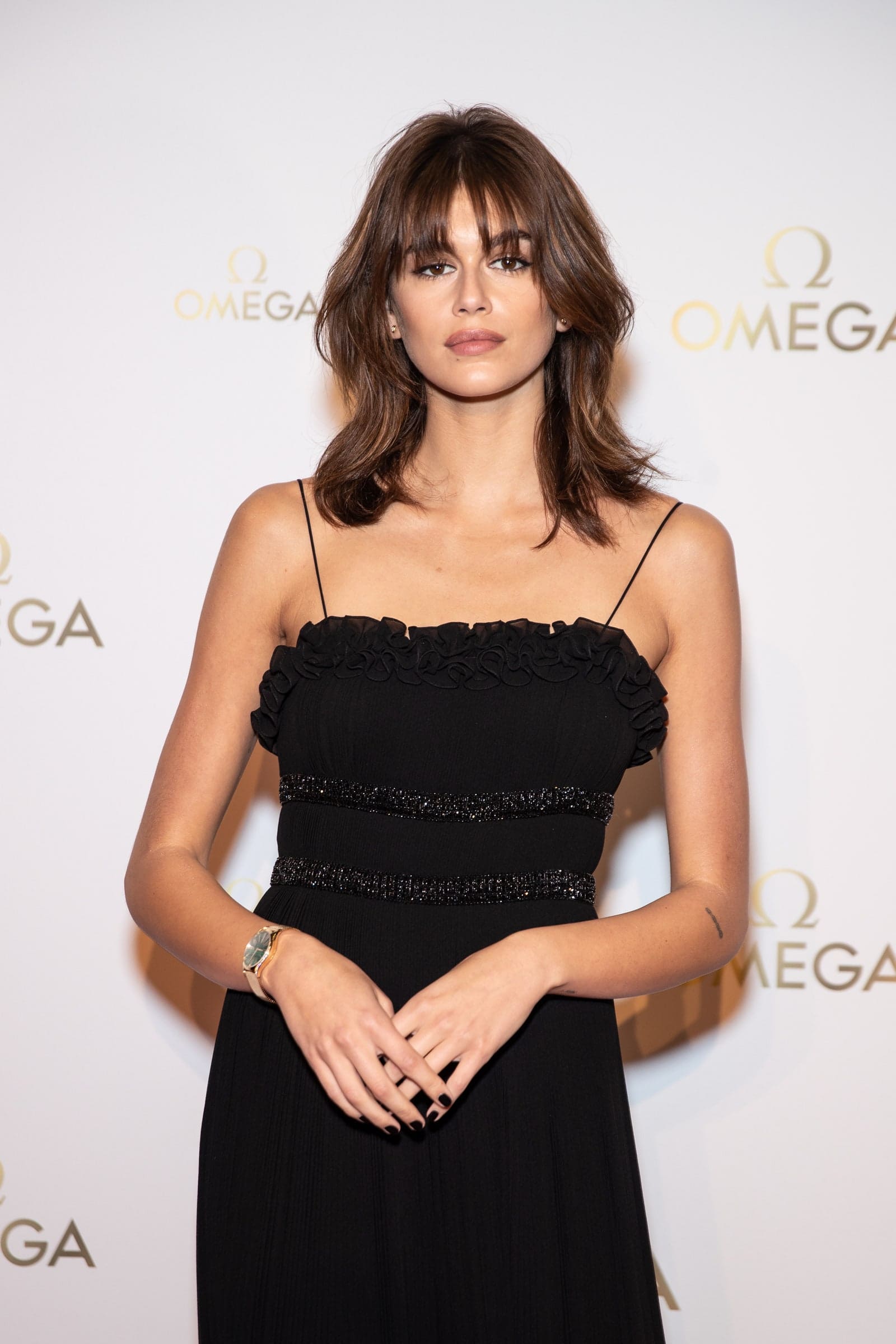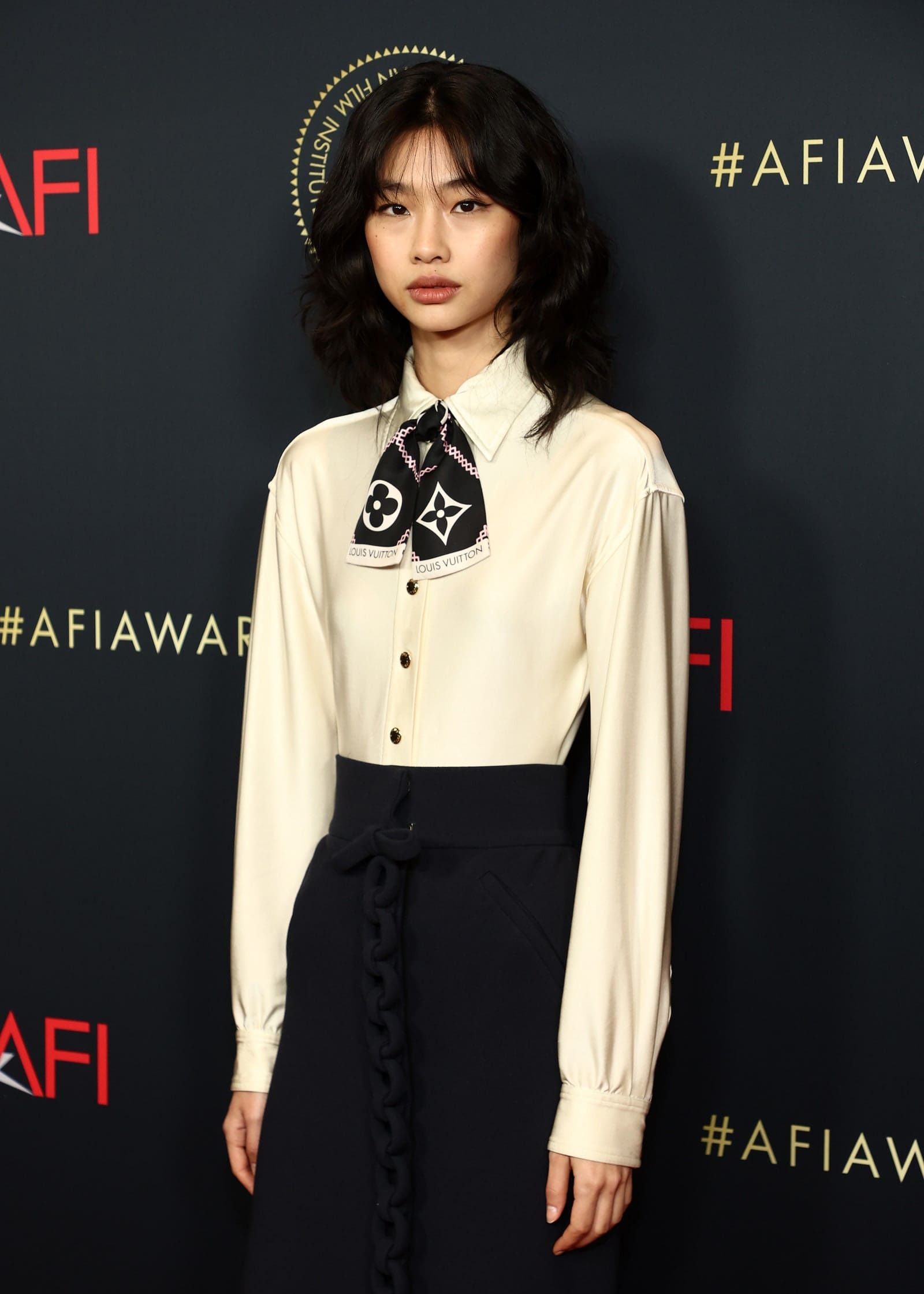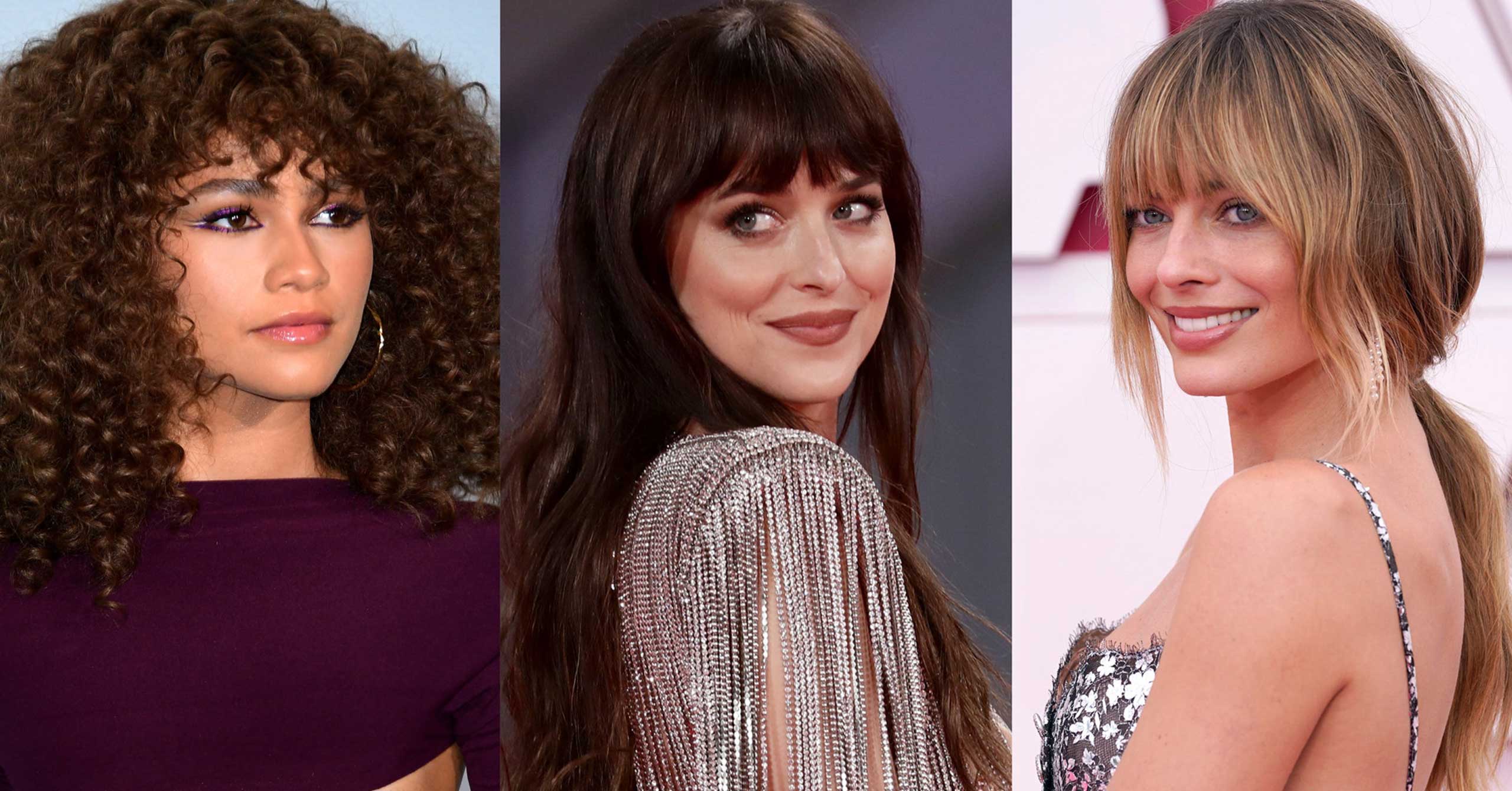Photo: Getty Images
Photo: Getty Images
For those who have contemplated getting bangs at least once in their lives (and whomst among us hasn’t), the go-to cut that is universally beloved is curtain bangs. All of our favorite celebs sport them, and all the experts agree that these bangs give a certain energy that the others can’t quite match.
“Curtain bangs give off a vibe of summer simplicity while elevating your entire look,” says Xavier Velasquez, a celebrity hairstylist at Jenna Perry Hair studio, of what makes the look so desirable. For the California-born-and-bred pro, shaggy fringe calls to mind the characters of a groovy Paul Thomas Anderson films while also nodding to Jane Birkin in the French Riviera circa summer 1973. It’s true that curtain bangs have distinct ties to the “Me Decade,” but the style is right at home in 2022. They do hinge on individuality, after all.

“When they’re done right, they’re flattering on everyone,” insists Mark Townsend, the pro behind Dakota Johnson’s ever-coveted fringe. “It’s a style that every face shape and every hair texture can have.” And trust that they’re as versatile as they are impactful. “They are a simple way to elegantly frame your face when the rest of the hair is pulled up and elevate loose hairstyles with a cool shape built in,” explains Vernon François.
So if you’ve been on the fence on whether this is the bang cut for you, we’ve got you covered. Here, a guide to navigating the curtain bangs look, from getting the right cut to styling them at home.
What are Curtain Bangs?
Curtain bangs do for your face what a set of artfully draped curtains does for a window. They are a softer, more bespoke interpretation of straight-across bangs meant to flatter one’s bone structure and highlight certain facial features, such as the eyes or cheekbones. “The perfect curtain bangs create softness and balance around the face,” explains Velasquez. “Whether you’re going with a longer version with a center part to open up your cheekbones or more forward and framing the brow line, their purpose is to bring out all of your positive features.”

Should I Get Curtain Bangs?
While curtain bangs are coveted for good reason, you do have to weigh if they’ll be right for you across the board. “Before taking the plunge, consider if bangs will suit your lifestyle,” says François. For one, there’s the sheer physicality of bangs. “Some people find the feeling of hair on the face uncomfortable or it might be more practical to have hair fully swept back day to day,” he says. In addition to more trips to the salon for bang trims, there’s also the additional maintenance like more cleansing (bangs tend to get greasy because they absorb the oil, sweat, makeup, and SPF from your face) and daily finessing—though many consider the latter to be far and away worth it. “If you can give your bangs 10 minutes, you’re done,” assures Townsend.
Which Face Shape Suits Curtain Bangs?
Curtain bangs can be seen as one of the most flattering bang cuts out there. Celebrity hairstylist and makeup artist Jess Elbaum says that it can generally work for many different face shapes and hair types, listing heart-shaped faces, square faces, oval faces, and round faces as the ones that usually work best with this cut.
For heart-shaped and oval faces, she explains that a curtain bang can help balance proportions and give you an overall more balanced look. With square faces, curtain bags can soften sharper jawlines, and round faces can help elongate features while adding dimension.
What Is the Difference Between Face-Framing Layers and Curtain Bangs?
The obvious difference between face-framing layers and curtain bangs is that one is a longer cut than the other. Face-framing layers, as Elbaum describes them, are aptly named with layers of hair that taper down each side. They can be different lengths, but they are the longer cut and hit just at the cheekbone or lower. Curtain bangs create a more symmetrical look, she says, and sometimes can be the only layer that is cut around the face.
How to Cut Curtain Bangs
Simply put: Leave curtain bangs to the pros. “Always have your bangs cut by a professional hairstylist who will give you a consultation first, taking into account your face shape, features, and lifestyle,” says François. Ahead of meeting with a pro, Townsend recommends doing your own research to understand what will works best for you.“When people come to see me for a haircut, they often show me pictures of bangs on a different face shape,” explains Townsend. “I’ve learned a lot of people don’t actually know their own face.” To that end, really take the time to understand your face shape and from there, he recommends drawing a rough sketch of your face on a piece of paper and shading the corners and/or the top of the head to see what helps give the illusion of an oval shape, which generally tends to be the desired goal for the most flattering results. “It’s a great way to prepare for a conversation with a hairstylist and give yourself more realistic expectations.”

Are Curtain Bangs High Maintenance?
The short answer to this is yes, but it does depend on your hair type and desired look. “For those with very coarse, curly hair, the bangs might require more maintenance, as the natural curl can make the bands less manageable,” says Elbaum. “With straight or wavy hair, curtain bangs are easier to maintain with a quick blowout.”
Why Do My Curtain Bangs Curl?
The perfect curtain bangs are effortlessly wispy, with a slight curl that sits just above the cheekbone. But oftentimes, we have to style them to get them this way as they can curl too much to our liking.
Curtain bangs do this for two reasons, Elbaum says. If your hair is naturally curly, then they’ll obviously curl at the end. Or if they’re cut at an angle, they will naturally curl at the end unless styled differently.
How to Style Curtain Bangs
When working with straight and wavy hair especially, shaping bangs while strands are still wet is advantageous. Townsend recommends blow-drying the hair straight down with a flat brush, like the boar-bristle offerings from Mason Pearson and Harry Josh, then using a round brush, held vertically, to “flick” bangs up. “It’s a little nod to the late ’60s and early ’70s, which is what we’re seeing right now, just modernized,” says Townsend. Elbaum adds that if you want to smooth out flyaways while still giving your curtain bangs volume, she recommends using a volumizing spray in the root area before blow drying with a round brush, like the Sisley Paris Hair Rituel The Blow-Dry Brush N1 and a Dyson Supersonic Hair Dryer.
For longer, cheek-grazing curtain bangs, Velasquez likes to break out a medium to large round brush. “Blow the whole section forward to maximize volume and then blow the ends back and out to to sweep the apples of the cheek,” he says. “Go one step further and set the section in a velcro for long lasting volume—think Claudia Schiffer in the ’90s.”Alternatively, you may consider the au naturale route. “I’m a big fan of air drying with the right cut and texture,” says Velasquez, who loves Virtue’s Frizz Block Smoothing Spray as a lightweight, humidity-fighting veil of moisturizer for lengths. “This lets the curtain bangs live freely, complementing all your features.” In either scenario, if cowlicks are an issue, consider flat creaseless clips at your parting to keep them at bay, or bring in the big guns with Townsend’s secret weapon: a beard iron for “a little bit of heat” without burning the scalp. For curly hair, letting bangs air dry is simple and effective according to François. But for extra definition, “finger coil or do two strand twists on damp hair, then let them set naturally or use a diffuser on a cool, low speed, before gently separating the curls out when hair is fully dry.” When working with coily and kinky textures, the pro likes to do two strand twists or bantu knots on freshly washed bangs. “When completely dry, pull them out and shape with an Afro pick or your fingertips, working a little serum through to amplify the texture,” says François. On the other hand, kinky bangs can be left to air dry naturally too for a short “pixie bangs” effect.

How to Maintain Curtain Bangs
To have curtain bangs is to know they require two things: 1) Regular visits to the salons for trims and shape-ups, typically every couple of weeks and 2) Refreshing them daily is essential for maximum impact. In the spirit of keeping them fresh-looking, dry shampoo is your best friend. “Whether in an aerosol or as loose powder, dry shampoos have gotten so user friendly and you don’t have to worry about that white powder residue anymore,” says Townsend, who utilizes dry shampoo at every stage, from squeaky clean hair (“it absorbs the sweat!”) to a couple days in for a refresh that adds volume and body. To revive curly, coily, and kinky textures, reset bangs every day or two with water or a spritz of lightweight styling mist like François’s Mist Nourishing Water.
This article was originally published on Vogue.com.
